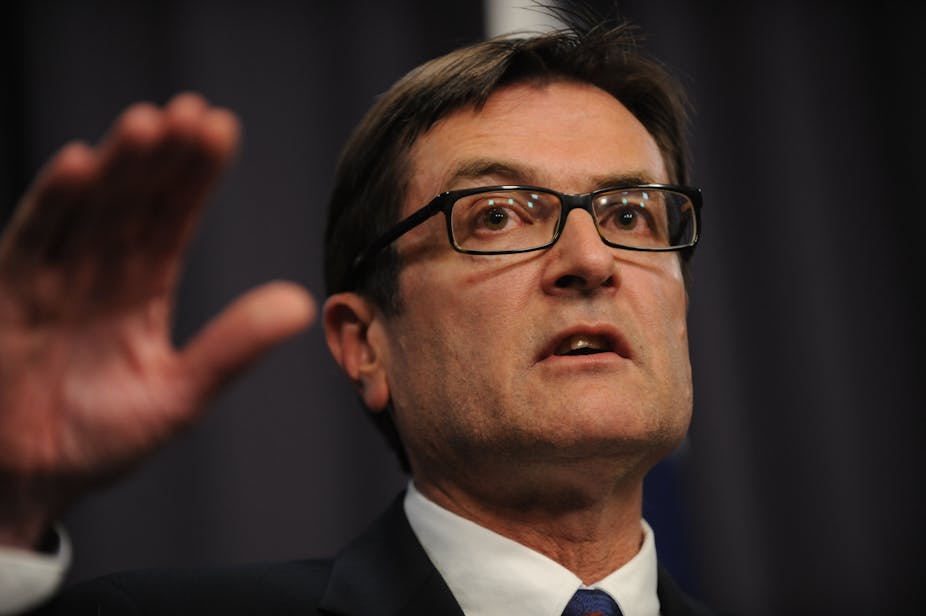You might have thought Australia’s carbon pricing scheme was done and dusted – at least until the next government comes in. Today’s announcement about the price floor and international permit trading proves otherwise.
The government, with backing from the Greens and Independents who negotiated the carbon pricing package in the first place, swapped out a key plank of the medium-term operation of the scheme. The so-called “price floor”, which was to apply from 2015 to 2018, is being replaced by a quantitative limit on the use of cheap international emissions units (CDM credits). And crucially, the Australian scheme will be linked up with the EU emissions trading scheme.
It is a change that is not without risks. But it is much better than the alternative of no price floor, which had been looming.
The effect is that the price from 2015 onwards, when the “carbon tax” phase of the scheme is to give way to a trading scheme, will now be the same as the EU carbon price. Whether it will be higher or lower than the government-determined floor price of $15 per tonne remains to be seen: the EU price is currently around $10 per tonne, but European governments are planning to lift it from the current low by releasing fewer permits. A year-and-a-half ago, the EU price was above $20 per tonne, and considered in a “comfort zone” for Europe.
Along with other economists and carbon market analysts, I have long argued that Australia’s carbon price needs to be prevented from falling to the rock-bottom levels of CDM credits (see here, here, and here.) That price is finding ever-new lows in oversupplied markets; credits are currently trading at just $3.60 per tonne. If the Australian carbon price was in that range it would fail to incentivise low-carbon investments.
The price floor would have been one way to prevent that price drop. It would have allowed companies to use as many CDM credits as they chose, provided they paid a top-up fee. But industry lobbied hard against the price floor, MP Rob Oakeshott withdrew his support, and the price floor regulations were not tabled.
The alternative route now taken is a binding quantitative limit on the use of CDM credits. CDM credits then fulfil only part of the required reductions, and do not determine the carbon price. This is what the EU has done, and it is what Australia is now set to do. Australian emitters will be able to cover up to 12.5% of their total emissions using CDM credits, down from 50% under the previous arrangement with the price floor. The 12.5% limit is sure to be tight enough to prevent the CDM from setting the Australian price. Yet it will allow Australian emitters to fulfil part of their carbon bill using cheap CDM credits.
The change goes hand-in-hand with accelerated linking of the Australian carbon market to the EU emissions trading scheme. From 2015, Australian emitters will be able to buy EU permits, at the EU price, and use them in Australia. From 2018, trade in permits could also go the other way. In effect it creates a combined market, with a common price.
However, the EU link itself is also the biggest drawback of the policy change. Is not the EU creaking under the strains of Southern Europe’s economic woes? Is it really a good idea to enter a market that is dominated by a larger partner, with a combined price that is much more influenced by policy decisions made in Brussels, Berlin and London than in Canberra?
The criticisms will come thick and fast, and in isolation they are justified. In my work on international linking of emissions trading, I have argued that it is in Australia’s interest to link to the main emissions trading markets – but only once the time is ripe.
But circumstances are far from ideal. Ever since bipartisanship over Australian climate policy was lost, political pragmatism has been the name of the game. The precarious parliamentary situation complicates matters further. And it may well be that Australia’s carbon pricing scheme has a better chance of survival under future governments, because repeal will now also mean severing the connection to the world’s largest carbon market.
All-in-all, the forward carbon price curve – taking into account all the risks and uncertainties – probably increased as a result of today’s policy change.
It will be interesting to see how Australia’s large emitters react to the change. Many of the large emitters, and in particular the power industry, criticised the price floor model for its “meddling in markets”, and expressed their preference for unfettered market pricing. The new model means rapid integration of Australia’s scheme with the world’s largest carbon market. On the face of it, industry should welcome this. If the reception turns out less than enthusiastic, then this might indicate that the real reason for opposition to the floor price was the hope that the carbon price level could be slashed by axing it. That did not happen.

